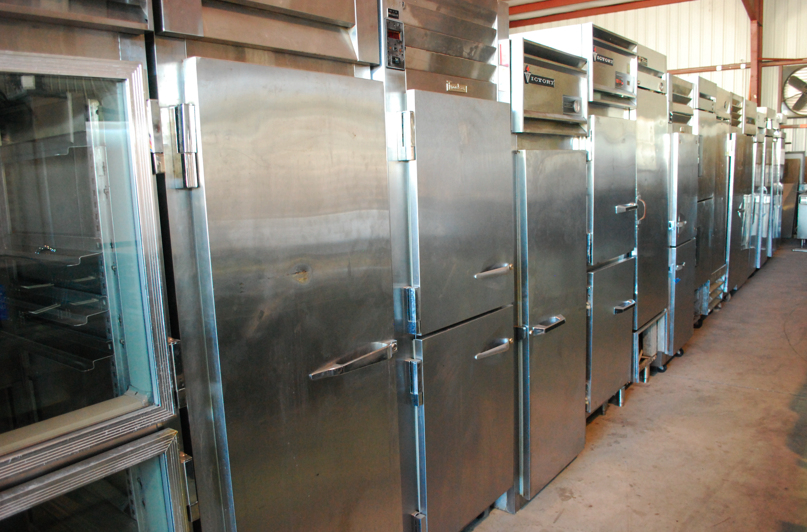Keeping a fridge or freezer the right temperature is key to the function of many businesses. Not only for foods, but for hospitals, transporters, and many other industries. The Elertus Smart Sensor has proved time and time again to be a perfect solution for monitoring freezers and fridges. Receive real time alerts whenever the temperature rises or drops past the safe and sometimes legal limit. It’s also handy for keeping your equipment well maintained and lasting longer.
We’ve looked at walk-in and commercial refrigerator operation, theory, major components, preventive maintenance options, and a host of other issues including the dreaded home refrigerator cleaning. So what’s a manager to do? Time to make a plan.
What’s needed in commercial and walk-in refrigerator and freezer preventive maintenance?
-
Clean condenser coils
-
Clean evaporator coils, defrost if needed
-
Clean fan blades and fan grills
-
Check thermostat vs actual thermometer
-
Clean interior and door gaskets with mild detergent
-
Inspect and clean drain lines
-
Relocate items that block airflow inside or outside of unit
-
Check door latch and gaskets are intact and working properly
-
If needed, thaw ice from coils
-
Listen to note any wobbles, rattles or other unusual noises during operation
The items above can be performed by most organizations if proper, trained resources are allocated. For businesses that operate every or most days, maintenance listed above is recommended at least quarterly but more frequently for installations where high heat and humidity are present (kitchens or summer months), or where high dust and dirt levels clog up condenser coils, outdoors or in kitchens for example. Operations with significantly less use such as public school cafeterias that serve only lunches can perform quarterly or biannual service for most installations.
Figure 1. Images from a website that provides very helpful commercial and walk-in refrigerator maintenance. Frost bound evaporator coil (Left Image) and well cleaned and maintained evaporator cooling fans from the site (Right Image).
Additional items not included above and more suitable for professional service companies are as follows.
-
Inspect all drain lines and pans for blockage due to dirt or ice accumulation
-
Inspect electrical wiring connections for tightness and corrosion, especially in outdoor installations
-
Lubricate moving parts (hinges, motors) as specified in the owner’s handbook
-
Inspect all pressure connections for tightness and corrosion
-
Perform manufacturer specified electrical and mechanical checks on compressor, automatic defrost components, thermostat and other controls and components
-
Check operation of all filters and driers
-
Check refrigerant level and pressure
Figures 3 & 4: Professional refrigerator maintenance requires specialized equipment and knowledge. Some examples: Left Image Right Image
Many of these items listed above require specialized skills, training and in some cases instruments, so such maintenance generally left to professionals. This maintenance is recommended quarterly or at least semiannually for high use installations such as restaurants and food stores. Those with challenging installations (hot, humid, outdoor, high dust level environments) will want to perform quarterly service at a minimum.
Additional items to consider for optimum operation that generally are able to be handled by managers or designated staff are as follows.
-
Maintain temperature controls to keep food at the recommended range during all seasons. This may require seasonal setting changes depending on how constant the environment (temperature and humidity) around the door and compressor coils is during the year.
-
Insure glass door refrigerated display cases use their door defogger in high humidity environments to avoid unnecessary opening’ but turned down or off in winter or low humidity environments.
-
Check your electric bill. Dirty equipment can add significantly to operating costs and are a good indicator service is needed.
-
Verify cooler temperature with a good quality thermometer to determine thermostat accuracy or whether an offset is needed.
|
One source notes commercial refrigerators that do not receive proper preventive maintenance can result in an additional $600 or more in electrical utility cost per year. (Link to Source) Figure 3 (Left) Regular preventive maintenance can also prevent costly service calls as is demonstrated in the graphic on the left. (Link to Image) In this case, one failure would be equal to eight (8) years of annual maintenance. Not only can such maintenance prevent equipment failures, but also lower electric bills and product loss. |
Figure 5. Link to Commercial Refrigerator and Freezer Troubleshooting Guide
For those who want to perform most preventive maintenance themselves, the DIY-ers, it is helpful to know where to start when your units are misbehaving. The table above provides a quick guide to many common problems, some possible causes and solutions. Although no list can be fully comprehensive, this table will help diagnose many issues and help determine when and if professional service is needed.
Commercial refrigerators and freezers and home refrigerators both operate on the same principle in most cases. The biggest difference is the amount of use commercial units receive. High volume grocery and convenience stores as well as restaurants, cafes and diners depend on their refrigerators and freezers for their business health. When these establishment suffer outages it can cost businesses a day’s or more income, loss foodstuff, and loss of goodwill. Regular customers will potentially go elsewhere and may find a new “favorite” place, meaning permanently lost revenue.
Whether businesses opt for DIY programs augmented by emergency service calls or annual professional service contracts, regular preventive maintenance as well as attention to operation of the units can help prevent many if not most outages. Regardless of the choice, understand how the units work, the preventive maintenance schedule involved, and potential costs and savings is critical to making an informed decision. And if you’re lost, go home and clean your household refrigerator to remind yourself why regular cleaning and maintenance is important.
Website showing typical home refrigerator maintenance. Link to Image
Elertus provides cost-effective, fault-tolerant wireless temperature monitoring solution for organizations of all sizes. Monitor your freezer and have peace of mind. Our products and services can help bring a food processor, distributor, wholesale or retail outlet into compliance with minimal training or effort. For information about Elertus’ offerings, visit our website at http://alrtu.com or call us at +1-801-341-9683.

